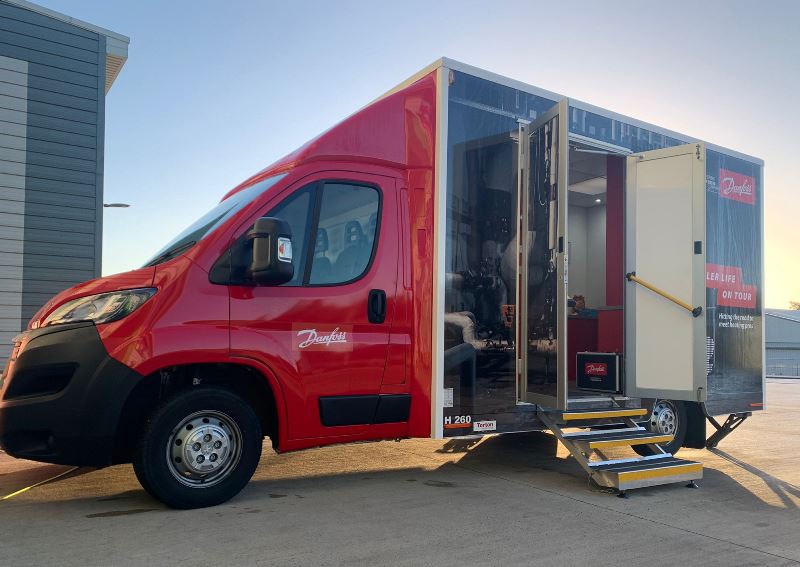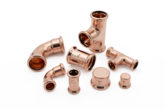
Gareth Ash, Marketing Communications Manager at Danfoss, explains how a new TRV is making it easier to balance hydronic heating systems and save consumers energy and money.
High heating bills and other complaints, such as noisy radiators and hot or cold spots around the home, can be caused by an unbalanced system. When a system isn’t properly balanced energy is wasted because hot water is unevenly distributed. As a result, the house can take a long time to warm up, increasing energy consumption and reducing comfort for occupants.
However, despite these benefits, surveys conducted by Ipsos MORI and the Energy Savings Trust as part of the Government’s Boiler Plus policy review have suggested that there are varying practices when it comes to system balancing. For example, while some installers reported that they carry out balancing as standard when fitting an entire heating system with new radiators, others said that they only carried out balancing on new installations if there were problems, such as radiators not heating up. The research also highlighted some installers’ concerns about the additional time – and cost to their customers – that completing this process would incur. It could also be that less experienced installers may lack the skills they need to undertake balancing with confidence.
Overcoming barriers
To overcome some of these barriers Danfoss has developed the RAS-B2 Dynamic Valve to make balancing faster and easier for busy heating professionals. Essentially, unlike some other TRVs which only act as flow limiters, this solution features a differential pressure controller. This ensures that pressure drops over the valve remain at a constant level, so flow through the valve is maintained at both full (winter) and partial (autumn/spring) loads.
Also, pre-setting of the desired flow is done on the valve, rather than on the lockshield, which it is estimated could save installers up to two hours of valuable working time. This means they can now make sure a system is correctly balanced in a fraction of the time it would normally take.
To make life even easier the RAS-B2 TRV is featured on the Danfoss Installer App, which provides an interactive guide to the process of calculating, recording and documenting the correct flow and subsequent setting for each radiator on a smartphone or tablet. Using the App’s radiator presetting tool, installers can perform quick and easy calculations based on the selected valve, sensor and key system parameters. Having defined flow, return temperature and differential pressure (the difference between static and dynamic pressure in the heating system) the App displays the calculated flow in litres/hour and emission in watts for each radiator.
Guide to balancing
The following 10-step guide provides a basic overview of how to balance a system using the RAS-B2 Danfoss Dynamic Valve with the Danfoss Installer App.
- If not already installed, download the Danfoss Installer App. For ease and convenience use the QR (Quick Response) code in the product instructions
- The App features simple navigation and prompts. Just click Next after completing each section to go to the next step.
- Firstly, select Radiator presetting from Quick Tools.
- Under System properties, define flow temperature, return temperature and differential pressure (the difference between static and dynamic pressure in the heating system – as a rule of thumb this is generally 10kpa (0.1 bar) for a standard residential heating system.).
- Choose Valve type, eg RAS-B2, from the options.
- Set Valve size from the options (10mm or 15mm for RAS-B2).
- Choose Valve sensor from the options, eg RAS-C2.
- In Method, select Radiator type from a choice of Panel, Column or Towel.
- Define radiator sizes using the drop-down menu. Heat Emission, Calculated Flow and presetting will be displayed.
- The recommended presetting corresponds to the positioning numbers on the ring on top of the valve body, ie 1 – 7 (N for Neutral = fully open). Simply turn the ring so the presetting number recommended by the App is in line with the arrow on the valve to complete the process.
Quicker commissioning
Apart from the time saved compared with using traditional methods, the RAS-B2 Danfoss Dynamic Valve and Installer App takes the element of guesswork out of hydronic balancing. As a further benefit, the App’s project function makes it possible to calculate the correct setting for each radiator prior to installation, allowing for much quicker commissioning on site. Once complete, a report of the settings is generated for future reference and will also document that the system has been adequately balanced and can be e-mailed to the customer if required.












